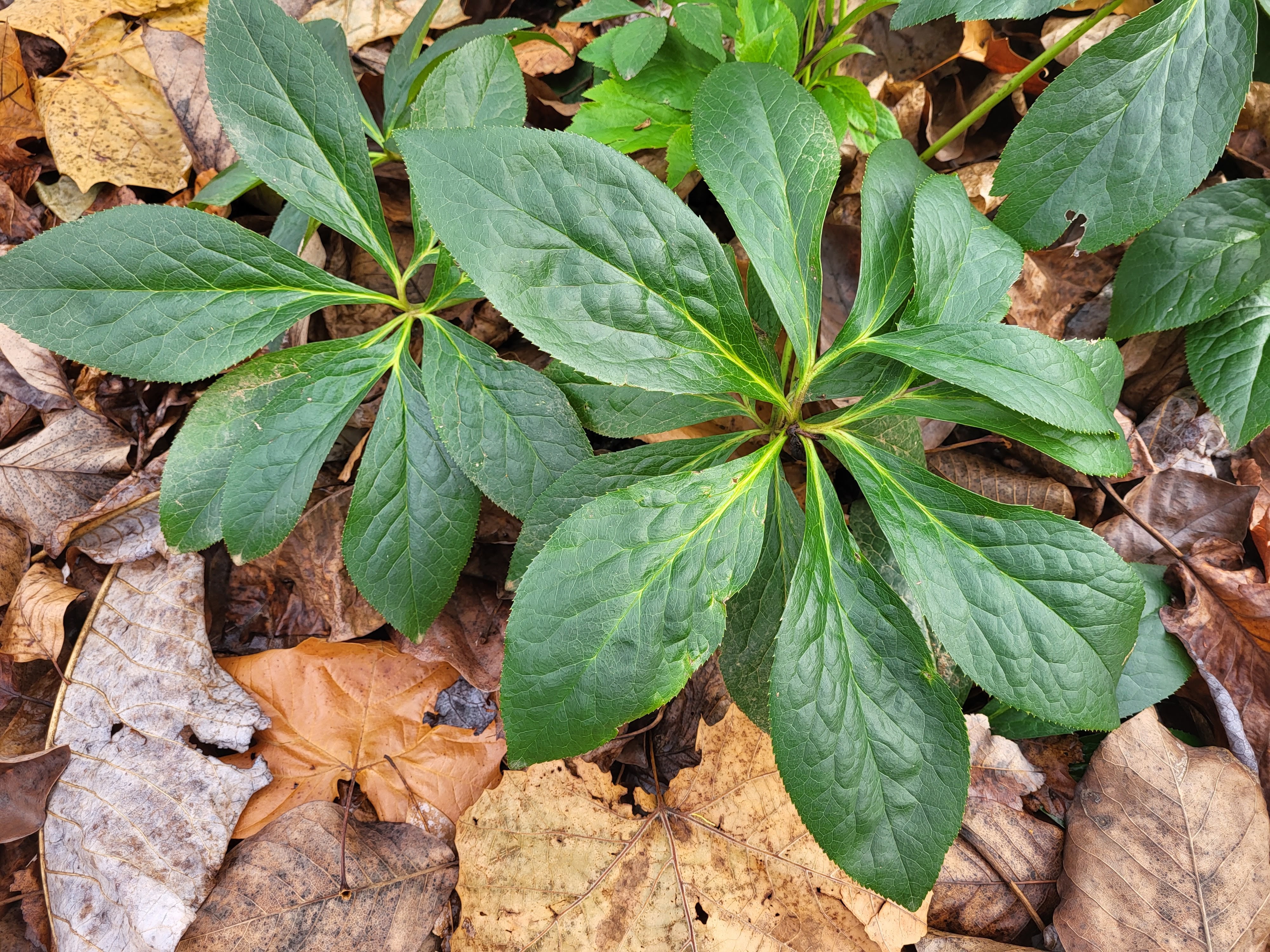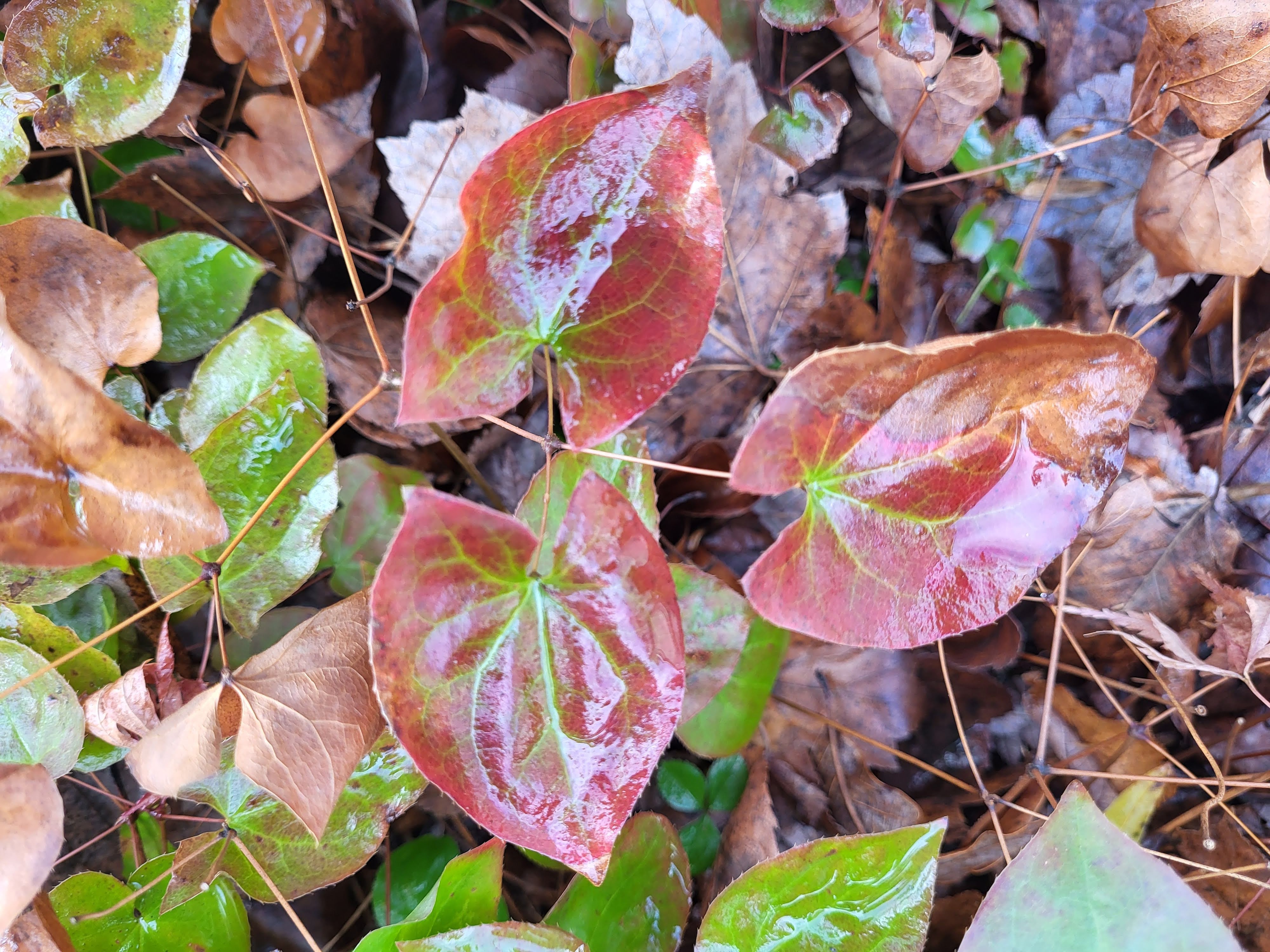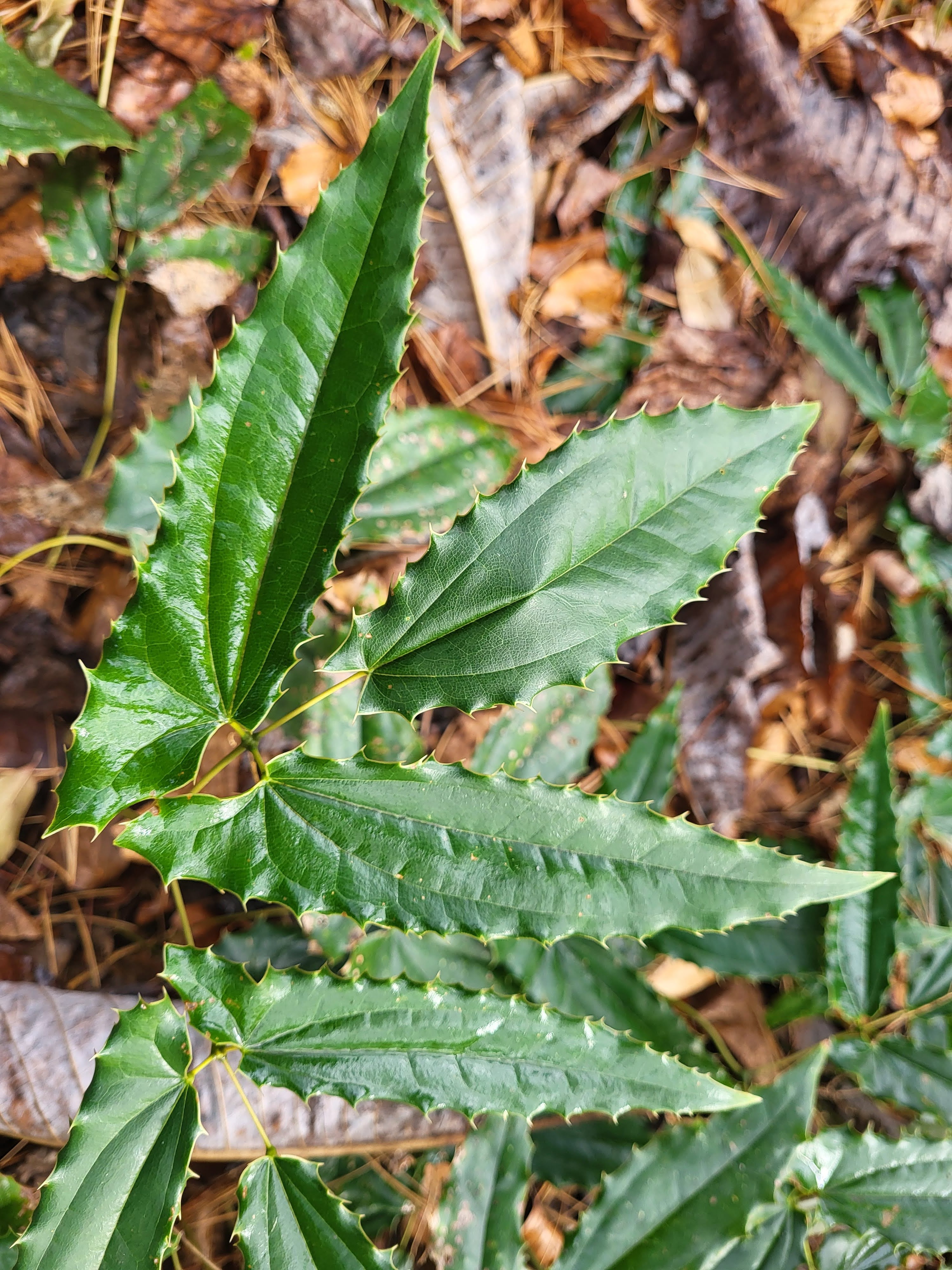Should I remove foliage of hellebores and epimediums in December, or not? I understand the recommendation to remove leaves so that late winter flowers are not obscured, but there are multiple considerations that dictate waiting until later in winter.

First, though I am out into the garden daily, my motivation is lacking. There are numerous hellebores (above) and epimediums (below) that will flower in mid or late winter, so all could (or should) be cut back, but this is not a project I’m inspired to do on a chilly winter afternoon. Second, not only is the chopping of leaves not fulfilling, but the garden becomes more bare without this foliage.

Yes, I know, when removing leaves of hellebores as they begin flowering in February I’ll whine that this could be so much easier if the leaves were cut before the flower buds extended. But, today I look at unblemished leaves, and while there are plenty of evergreens in the garden, I need green in winter. The more, the better, so I think I’ll push this chore back a bit. Again.

Greetings Dave, A faithful reader here though an infrequent Commenter. Thank you so much for your blog. Thank you in particular for this topic. We only have a dozen or so hellebores a but I am in thinking exactly the same thing. Delighted to hear we can push it a bit. Thank you Dave!
The downside of waiting is that stems of leaves must be cut individually rather than in bunches. There are enough hellebores here that I don’t remove leaves at all for ones with flowers that stand slightly above foliage if they haven’t been damaged.
Dave…we live just a county or two east of you, and your columns on Japanese Maples and hellebores and wood poppies and black snakes and raccoons are always spot on for us. Now I see that you face MY dilemma about raking around the hellebores. Do the heavy, dead tree leaves block the spread of seeds for the next generation? Is it possible for me to gather seeds (from the dying blooms in Feb-Mar), stratify them, then plant them in the spring?
I remove piles of leaves that accumulate on top of hellebores so flowering is not delayed, but the ground surrounding them is covered until leaves finally decay in summer. This does not hinder seed germination. Occasionally, I transplant some larger seedlings, pot up and give some away, and many of the hundreds are eventually weeded out. Some recent introduction hybrids are sterile with no seeds, so this could be the reason if you have no seedlings.
Seeds can be collected as they ripen in spring by attaching a fabric bag over the fading flower. I believe they are slow to germinate.
We typically just bury hellebores with a topdressing of compost. Bloom emerges through the compost. Hellebores do not perform well here anyway, so the foliage is rather shabby by now. Some are already blooming when they get buried, but the bloom stands up through the topdressing, while the foliage gets pressed down. Last year though, I was told that the fungal pathogens that ruin the foliage simply ovewinter within the buried foliar debris, to more efficiently infect the new foliage as it emerges. That is why we remove foliar debris from below the roses. I did not consider it to be a problem for the hellebores.
Here, foliage is damaged by severe freezes or it remains green. Our only problems are with poorly drained soils.
The climate there may not be as conducive to the proliferation of fungal pathogens. I really do not know why hellebores do not perform as well here as they do where winter weather is cooler.
I’m really glad to see this article. I will wait, too. I was wondering what to do about my Hellebores.
When do you cut back all your perennials? Mulch? I used to do it in November, but thought the dead perennials were interesting!
I clean up perennials and deeper piles of leaves in March before new growth begins. Then, the weather should be more pleasant and perhaps some overwintering insect eggs will have hatched. I am rarely in a rush earlier unless there is a very mild period in February.
And mulch, never. I use only leaves as mulch. I sometimes pay a price in thin spots with weeds, but my budget goes towards plants.